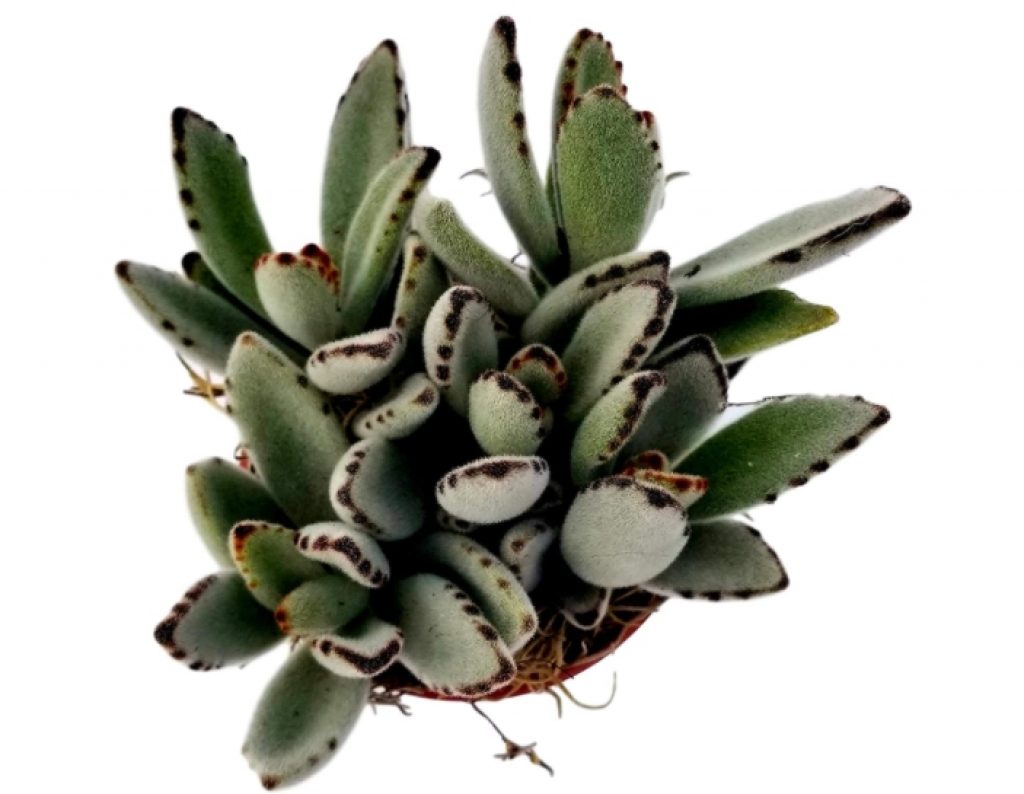Kalanchoe is a genus name for around 125 tropical, flowering succulents in the family Crassulaceae (the stonecrop or orpine family) native to Africa and Madagascar.
The genus comprises mainly shrubs and perennial shrubs with Kalanchoe blossfeldiana, commonly cultivated houseplants that thrive at temperatures no less than 10°C (50 °F). You have to shelter it in a glass container in temperate regions to protect it from biting cold.

Charming scalloped leaves and beautiful flowers make Kalanchoe one the favorite succulents potted houseplants. Unfortunately, all Kalanchoe species are toxic to cats and dogs since they have bufadienolides, including bryotoxins, bersalgenins, and bryophyllins, which when ingested will result in the following symptoms of toxicity:
- Vomiting
- Diarrhea
- And rarely an abnormal heart rhythm.
The various species like Kalanchoe daigremontiana (Devil’s backbone, mother of thousands Mexican-hat plant, Kalanchoe blossfeldiana (flaming Katy, florist kalanchoe, Christmas kalanchoe, Madagascar widow’s-thrill), K. beharensis (velvetleaf, felt bush or felt plant), K. pinnata (air plant, cathedral bells, Mexican love plant. Don’t confuse with Tillandsia also known as air plant) are all poisonous to cats.
Even species like K. delagoensis (Mother of millions or chandelier plant), and Kalanchoe gastonis-bonnieri (palm beachbells or donkey ears), and many we did not mention are not safe.
Besides cats and dogs, Kalanchoe is also toxic to sheep and cattle and your children or even you.
Finally, if you suspect your feline pal has ingested any Kalanchoe species, talk to your vet or call these poisoning helpline numbers.
- The American Association of Poison Control Centers (800) 222-1222,
- The ASPCA Animal Poison Control Center (800)426-4435
- The Pet Poison Helpline 1 (855) 764-7661
Protecting them
Just because they are toxic doesn’t mean you cannot have them at all. You can still have these indoor ornamentals if you are ready to ensure your kitties will not eat them. To do so, you should consider the following strategies:
- Grow them in a cat-proof plant terrarium. This is the safest way to ensure your pets don’t eat this or any other dangerous houseplants.
- Use of repellents and deterrents. There are many brands in the market for outdoor and indoor use. For instance, you can try PetSafe SSSCAT Spray Dog and Cat Deterrent, Motion Activated. However, there is no guarantee that repellents or deterrents will keep your cat 100% away from any houseplant.
Besides these two, you can give them toys to reduce boredom as it only worsens plant-eating, train them not to eat plants, among other ways.
Conclusion
To conclude on cats and Kalanchoe and cats, our best advice will be to go for safe houseplants if you have cats unless you get a plant terrarium. Buy plants such as peperomia, African violets, Christmas cactus, Aluminum plant, Echeveria glauca, prayer plants, among many others.
